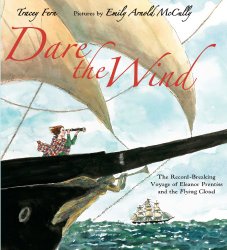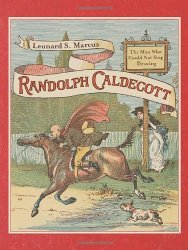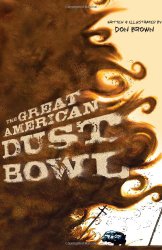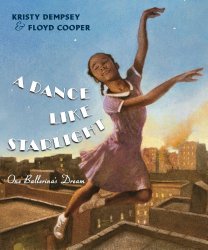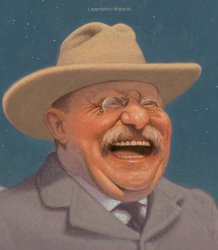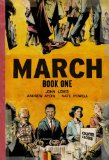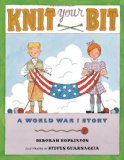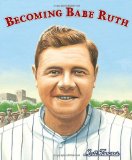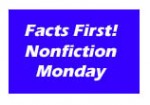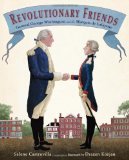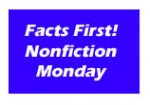Review of Dare the Wind, by Tracey Fern
The Record-Breaking Voyage of Eleanor Prentiss and the Flying Cloud
by Tracey Fern
pictures by Emily Arnold McCully
Margaret Ferguson Books, Farrar Straus Giroux, New York, 2014. 36 pages.
Starred Review
How wonderful! A nineteenth century young woman navigated clipper ships for her sea captain husband and actually broke speed records because of her daring and mathematical prowess! Who knew? Now this is a true story I’m eager for little girls to know about!
The book starts with Ellen Prentiss as a child, loving the sea. Her father teaches her how to navigate. The illustration shows her using a sextant outside their house, by the sea, under her father’s observation. “Ellen worked for hours by the kitchen fire, learning the complicated calculations needed to navigate a ship.”
Ellen eventually marries a sea captain, Perkins Creesy. He becomes captain of a new clipper ship, built for speed.
If Ellen and Perkins could make the trip faster than any ship ever had, they would receive a bonus – and bragging rights as the best sailors in the world. It was the adventure Ellen had always dreamed of catching!
The author goes on to dramatize Ellen and Perkins’ record-breaking journey, using information from the log. There was plenty of adventure on the voyage, including a broken mast, and time spent in the Doldrums, with Ellen taking a daring new route to escape them.
In the end, on August 31, 1851, they reached their destination and brought passengers and cargo to the California Gold Rush faster than any other ship ever had.
An Author’s Note at the back gives more details of the journey, along with sources of more information for the curious reader.
This is a wonderful picture book about a woman who used her brains to become the best in the world!
traceyfern.com
emilyarnoldmccully.com
Find this review on Sonderbooks at: www.sonderbooks.com/Childrens_Nonfiction/dare_the_wind.html
Disclosure: I am an Amazon Affiliate, and will earn a small percentage if you order a book on Amazon after clicking through from my site.
Source: This review is based on a library book from Fairfax County Public Library.
Disclaimer: I am a professional librarian, but I maintain my website and blogs on my own time. The views expressed are solely my own, and in no way represent the official views of my employer or of any committee or group of which I am part.
